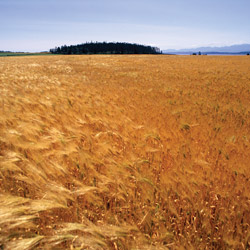
The world of grain farming has seen dramatic changes in the last 30 or so years. These years are particularly relevant to me, as they correspond to my lifetime, which includes growing up on a farm in central Illinois and still being involved today. Farming, like any other business, is faced with the challenges of an ever-competitive landscape and increasing focus on efficiency and business knowledge to survive. But its roots lie in basic American principles of hard work and the desire to pass something along of worth (both financial and non-financial) to future generations.
The raw numbers of farming tell a story of ups and downs over the past 30 years. Average corn yields in central Illinois in 1980 were 110 bushels per acre, while in 2009, average yields were approximately 190 bushels per acre. In 1980, high-quality land values were in the $3,000-$3,500 per-acre range; today, values of $7,000 per acre are not uncommon. That is not to say that it has been a steady upward curve. The mid-1980s were detrimental to many farmers, as low commodity prices and high interest rates caused losses to accumulate and land values to plummet. Many small farmers were forced out or foresaw that they could not continue to farm without taking on too much risk and debt. Contrast this to the last decade, which has seen farmland values rise eight percent per year, while stock market performance was stagnant over that time.
As most farmers do not own all of the land they farm (or even the majority), higher farmland values really mean higher cash rent payments. Along with the increase in cash rents over the past decade, the capital (money) needed to farm today is quite significant. The sheer size, power and sophistication (technology) of the equipment needed for planting and harvesting has increased as farmers need to farm more acres to cover fixed expenses and reduce labor costs. In addition, the cost of crop inputs such as seed, fertilizer and chemicals has risen, largely as the result of advances in biotechnology and/or world demands. The new technology and the interaction of seed and chemical choices (i.e. “Roundup Ready”), makes the choice of inputs a real challenge. Picking the wrong combination can cause dramatic losses. Those of you who have ever sprayed the dandelions in your lawn and discovered that you also killed the grass can relate!
Assuming the capital and technological challenges are overcome in planting and harvesting the crop, the matter of selling and storing the crop is the next hurdle. Farming is different from many businesses, in that the price for commodities produced is set by an open market of traders at the Chicago Board of Trade and local elevators and terminals. In other words, farmers are forced to take what the market gives them, although advanced futures and option trading strategies can help mitigate the risk. Another recent challenge with selling the crop relates to handling the increased volume of grain and the potential lack of available storage space or drying capacity. More farmers now find it beneficial to have their own grain storage and drying facilities. Those who did were thankful during the extremely late harvest of 2009 to not be at the mercy of an elevator or terminal.
While farming has become more of a numbers and business profession over the past 30 years, the roots of farming remain a way of life. Farming the same land that your father, grandfather or great-grandfather farmed gives one a tremendous appreciation for the land. In addition, it gives a connection to past generations (standing on the shoulders of your ancestors). Doing things the right way the first time is often stressed on family farms as you truly “reap what you sow.”
The basics of farming (taking raw soil, preparing it, planting, caretaking, harvesting) gives one a strong sense of accomplishment and appreciation for Mother Nature. Despite the most sophisticated plans, the biggest equipment and the best seed, farmers are still at the mercy of the weather in determining the success of the year. The lateness of the 2009 harvest was clearly a stark reminder of the power of Mother Nature. It is this uncertainty (risk) that farmers are really tasked with managing, and is what makes farming so challenging and rewarding. iBi

